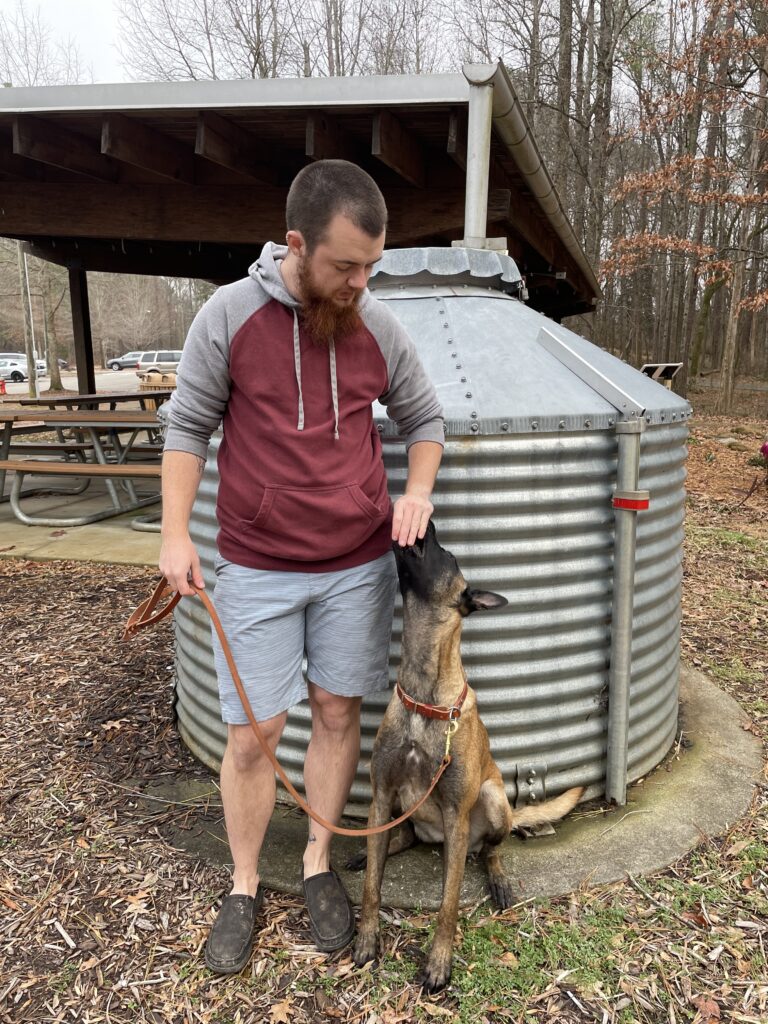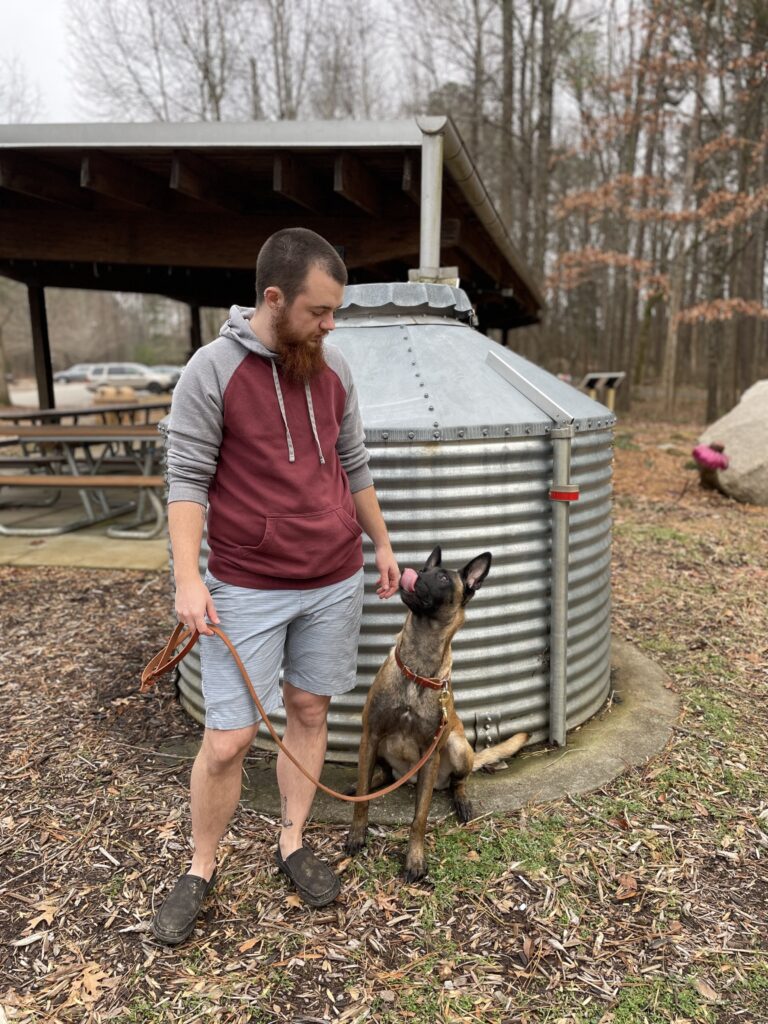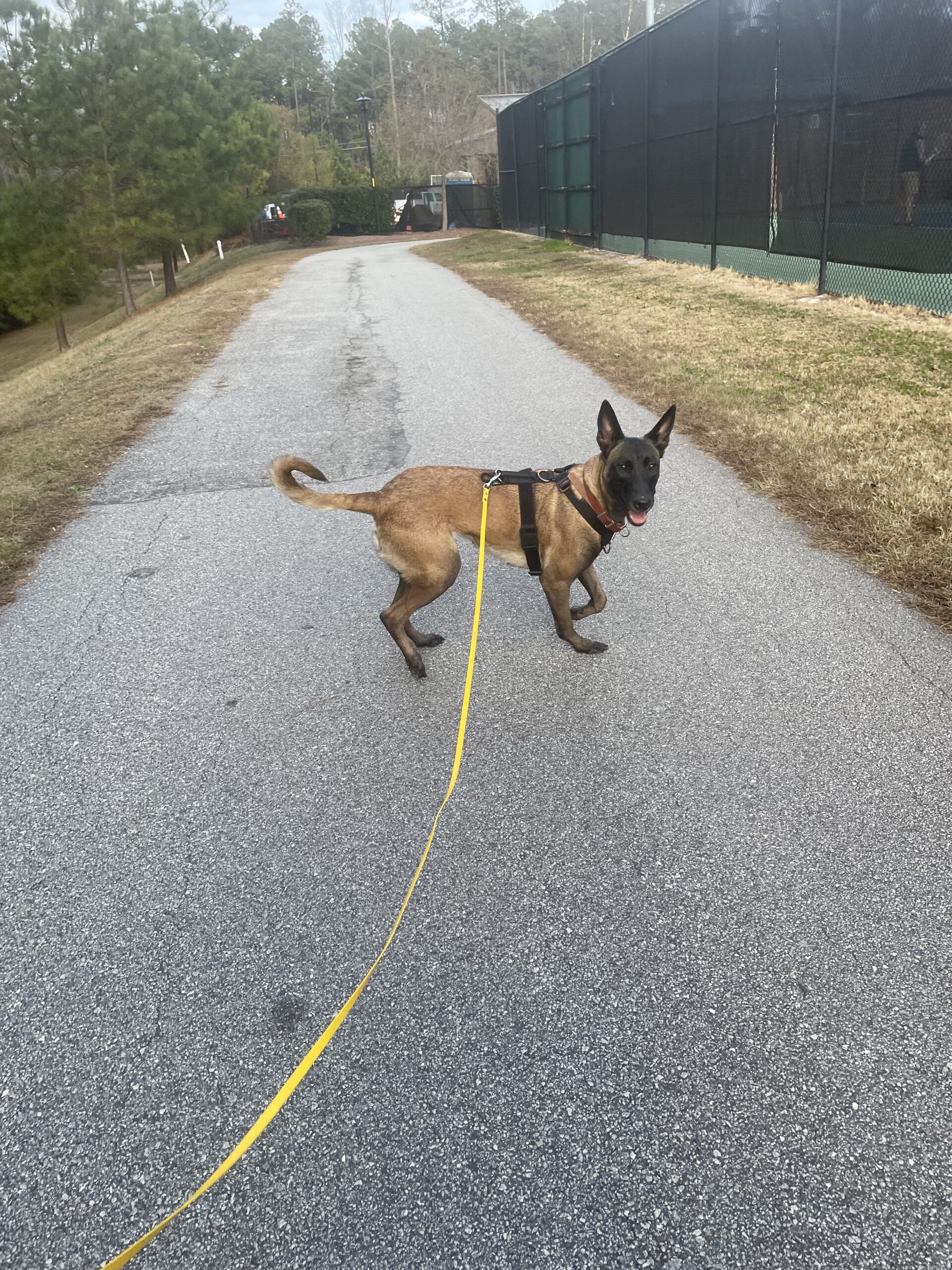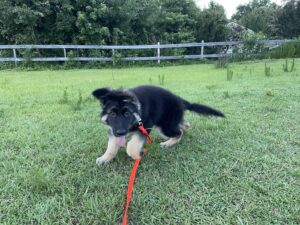For many dogs, leashes are a simple fact of life! Even for dogs who spend the majority of their time off-leash, having the ability to calmly walk on-leash is an essential life skill.
Although it may seem odd, leash training foundations are often best started inside (and some of them without using a leash at all!) Just like all other behaviors, we want to teach our dogs the mechanics of the skill in an environment without distractions. The first essential pieces of successful leash training are the Basic Position, the Leash Cue, and the “Red Light, Green Light” technique.
The Basic Position (Intro to Heeling)
The basic position is the spot where you want your dog to hang out when we aren’t going anywhere and we need them to remain stationary, or when we are moving and we want them to be while we move. Traditionally, the basic position is on the handler’s left side, facing the same direction as the handler, keeping pace while moving and sitting when stationary.
You can choose any position that works for you and your dog, but your best success will be choosing the side you want your dog to walk on and choosing a position your dog already knows and is good at.
To teach the basic position:
- Grab a handful of treats. Give your dog some free treats to get started!
- While standing still, lure your dog to your side and ask them to sit (or down).
- Pay them for hanging out there.
- Take a few steps forward, luring them with you and paying to keep them engaged.
- Stop, and ask them for their basic position (sit or down).
- Repeat, paying well.
As your dog understands that hanging out with you pays well, you can start to incorporate turns.
Hot Tip: When you pay your dog, make sure to deliver the treat where you want their head to be located – most often, next to and even with your left leg, and at their height.


Leash Cue Game
The leash cue exercise is useful for a variety of situations, but it is especially useful in reducing frustration on leash and helping dogs understand what the leash is there for. You can check out the article linked above for a bit more information and context, but here are the basics of teaching the leash cue:
- Grab some treats, your dog, their leash, and their normal walking collar / harness. Head to a spot without distractions.
- Give your dog a free cookie, then place a few on the ground and step away so they can eat it.
- Using light pressure, gently tug on your dog’s leash just enough for them to feel it. Immediately call their name in a happy tone and take a step away.
- Mark and reward when they look at you or follow you. Place another few on the ground and repeat.
- As they begin to understand the game, you can phase out your voice cue – just give that gentle tap-tap with the leash and throw a party for them when they focus on you!
Red Light, Green Light
The Red Light, Green Light technique focuses on teaching your dog that reducing leash pressure and slowing down slightly actually results in them getting to their desired destination much faster than pulling or adding leash pressure. You can use this in real life as opportunities present themselves, or you can manufacture a set-up specifically to practice this exercise!
Red Light, Green Light utilizes forward motion as the reward for keeping a loose leash.
- As you’re walking and your dog is keeping a loose leash, keep moving forward! Don’t hesitate to praise or reward with food for staying in your bubble (tip: give food rewards in the basic position!)
- As soon as your dog puts tension on the leash, halt forward momentum. Stand like an immovable statue, and try not to let your dog jerk on the leash or make progress forward.
- As soon as your dog eases up on leash tension, lightly praise your dog and resume your walk forward!
If Red Light, Green Light is an effective technique, you should see a notable reduction in pulling on the leash within a few walks. If you don’t see a reduction, or the pulling gets worse – check in with your trainer so they can make adjustments to your plan!
It may be tempting to use food in this exercise to reward your dog for easing up on leash tension, but I don’t typically recommend it. Doing this can teach your dog to run ahead and pull on the leash for the opportunity to ease up on the pressure and return for more food (some people call this yo-yo walking!) Instead, focus your food power on rewarding your dog for staying within your bubble and avoiding leash pressure entirely!
To manufacture a set-up for playing Red Light, Green Light, you will need something your dog really likes! Great options include a bowl of food or treats, a toy they enjoy playing with, or a person they really want to greet. Place their treasure on the ground in an easily visible location, then bring them out on leash. Seeing their treasure should encourage them to pull on the leash towards it and give you the opportunity to practice the technique.



